
- To receive an intravenous (IV) nutrient solution, the necessary equipment includes:
- a catheter (thin flexible tube) that is installed in a large vein to allow the nutrient solution to enter the bloodstream;
- the catheter is attached to tubing (small flexible plastic tube) which has a clamp and a needleless connector (or injection cap); this connector is usually attached to longer tubing called the extension tubing;
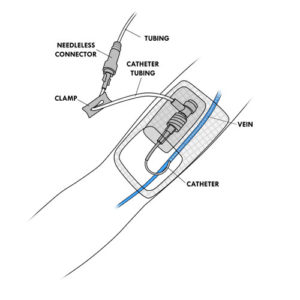

-
- a transparent dressing protects the insertion site of the catheter, where the catheter enters the skin;
- a bag containing the parenteral nutrition solution;
- the bag is connected to an ambulatory infusion pump (eg, CADD®-Solis VIP) via tubing;
- the flow rate of the solution is programmed and controlled by the pump.
- The parenteral nutrition solution bag contains elements necessary for the body to function and develop:
- proteins (in the form of amino acids),
- sugar (usually dextrose),
- electrolytes (eg, sodium, potassium, calcium, etc),
- trace elements (eg, copper, zinc, chromium, etc),
- lipids (fatty acids),
- vitamins,
- etc.
- The bag comes in several sizes (1.5, 3 or 4 liters). It is composed of two parts (chambers) separated by a partition device. The pharmacist fills the bag with the solution by injecting the relevant nutrients into each portion (chamber) of the bag through the appropriate injection port. Before giving the solution to the child, the parent may need to prepare and inject extra ingredients (eg, vitamins or medicines); this is given through a specific injection port in the lower chamber of the bag (injection port for parent). The partition device is removed from the bag so that the solutions of the two chambers mix before connecting the tubing to the bag by its insertion port; the blended solution is now ready to be given to the child.
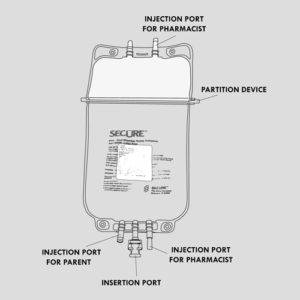
- The choice intravenous catheter depends on the age of the child, the health condition, the condition of the veins, the type of the parenteral nutrition solution and the duration of the treatment. Several kinds of catheters are used for the administration of parenteral nutrition at home:
- Peripherally inserted cental catheter (commonly referred to as “PICC Line”): long thin tube inserted in a larger vein of an arm and which follows its path to the entrance of the heart.

-
- Central tunnel catheter (eg, Broviac®): this type of catheter is inserted partly under the skin of the chest and is threaded through a larger vein towards the heart.
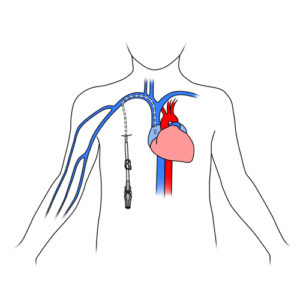
-
- Implantable chamber catheter (eg, Port-a-Cath®): includes a small reservoir inserted under the skin and attached to a catheter which is inside a large vein leading to the heart. The reservoir is accessed by piercing the skin with a special noncoring needle (eg, Huber needle).
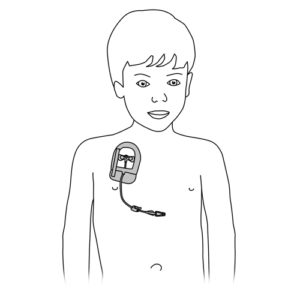
- An ambulatory infusion pump is used to deliver the parenteral nutrition solution contained in a bag. This bag is connected to a special tubing with an air elimination filter and a Y-port, a clamp and a cassette that attaches to the pump. This tubing connects to the needleless connector, with or without additional extension tubing.
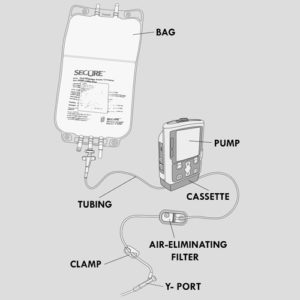
The pump works with non-rechargeable batteries or a rechargeable battery.
It is programmed to automatically deliver the nutrition solution into your child’s catheter at the rate (speed) prescribed by the doctor.
The pump CADD®- Solis VIP was chosen to illustrate and detail the steps of the care methods concerned, as it is the model of pump frequently used for children.
Your child’s healthcare team will supervise the parenteral nutrition treatment and ensure that the equipment is functioning properly. Ask your healthcare team about specific recommendations for your child, including the procedure for changing the protective dressing which protects the insertion site of the catheter.
Refer to your healthcare team if the equipment used for your child is different from what is described in the care methods.